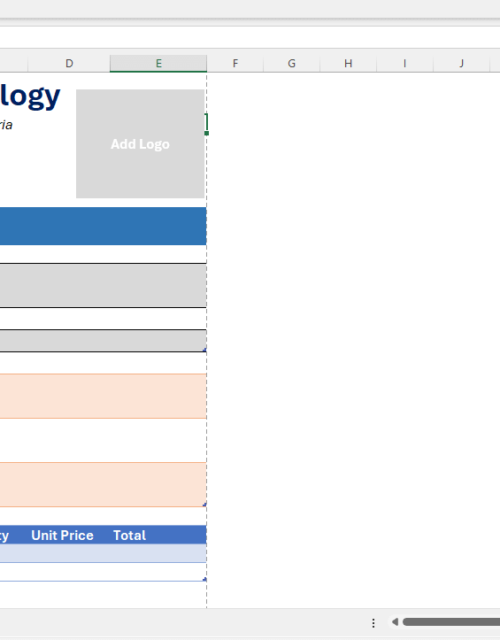The Effect of Bad Leadership on Organizational Inefficiency

Bad leaders lack these important skills, thus, rather than move the organization forward, retards its growth. A good leader will help promote the organization’s vision whether he/she is in a leadership position or not.
Great leaders hone their leadership abilities in order to perform better at work and ensure the success of an organization. Leaders create alignment, capture the public’s attention, and hone the abilities of others.
Bad leadership has been seen to be detrimental to an organization. It leads to inefficiency, poor employee interaction and retention, and poor product development. Bad leadership has a lot of negative impacts on an organization, and should be avoided.
Even with the best product in the world, organizations still require driven and knowledgeable leaders to flourish. Because of this, understanding and effective organizational leadership is essential.
Thus, this research work shall discuss bad leadership and its impact in an organization. I believe that the outcome of this research will help you understand the cost of bad leadership and avoid it.
Table of Contents
Bad Leadership and Organizational Inefficiency
Bad leadership leads to organizational inefficiency on a large scale because it affects virtually everything that concerns the organization.
It leads to stress and burnout of the workforce which affects the physical and mental health of employees. WHO recognizes this as a global occupational phenomenon (Miller-Jones, 2020).
According to Mental Health America,
Research has shown that one’s ability to experience satisfaction in life is correlated with the opportunity to experience satisfaction in the workplace. This is because individuals spend almost one third of their life working. It is therefore important to consider workforce’s mental and physical health (MHA Workplace Health Survey, 2017).
It is noted by Gallup that one out of two employees quit their job due to bad leadership. While about 70 percent are looking for a new job due to lack of good leadership.
Moreover, bad leadership leads to lost in productivity, employee absenteeism, safety issues, turnover and increased healthcare costs.

A bad leader will frequently exhibit traits including inadequate emotional intelligence, contempt, bias, intimidation, and a lack of empathy, support, recognition, and self-accountability.
Employees who cope with such actions may experience personal consequences that affect them throughout their lives, including exhaustion, impatience, rage, a lack of desire, migraines, and heart attacks.
In fact, according to a study on the link between workplace stress and mortality, “about 120,000 deaths annually and roughly 5%-8% of yearly healthcare costs are related with and may be attributable to how U.S. firms manage their work forces” (Miller-Jones, 2020).
Based on these tragic results, businesses are finding it harder and harder to hire and keep highly effective leaders who motivate their teams. When we take into account the Fourth Industrial Revolution and the four generations that are currently in the workforce—the baby boomers, Generation X, millennials, and Generation Z—this problem gets more complicated.
Before we proceed to its impact, let us consider the bad leadership habits and behaviors that should be avoided.
Bad leadership habits that can lead to organizational inefficiency
There is no assurance that someone who finds themselves in a leadership position would become a good leader, as not everyone has inherent leadership abilities.
Many executives enter their positions without any professional leadership training or prior experience managing people. They may thus inadvertently form bad behaviors that could demoralize their teams.
Leaders can focus on altering their bad behaviors and develop into great leaders if they are able to identify them. The following are some leadership habits that should be avoided.
Excessive commitment
Overcommitting the company, the team, or oneself is a bad tendency frequently observed among bad leaders. This may result from a lack of prioritizing and attention, or from a desire to please. Too many “yes” responses dilute both an organization’s and a person’s efforts.
As a result, there can be feelings of exhaustion and disengagement, disagreements and misalignment, and eventually no progress. Instead, leaders would be better suited to concentrate on a small number of crucial issues.
Losing sight of the broader objectives
The capacity to articulate and effectively communicate the organization’s vision and plan is a crucial quality of top leadership. Far too frequently, leaders lose sight of the bigger picture while concentrating on short-term performance and goals.
As a result, employee engagement is low, the business suffers, and they are unable to match the goals of their team with those of the company.
Discarding unlikely early alerts
Senior leaders are better able to interpret developments because of their vast experience. This enables people to take prompt, correct decisions while also discounting warnings that seem improbable at first.
Yet, among the data that was destroyed were warnings of the pandemic and the credit crisis, which had occurred years earlier. By regularly reviewing unusual warnings, leaders can avoid strategic errors.
Lack of accountability
A persistent bad habit demonstrates a lack of accountability. Leaders should be willing to accept responsibility when they are at fault rather than focusing on maintaining their good name and maintaining their appearance.
Leaders need to set an example and practice what they preach. How? establishing trust and respect by owning up to their faults rather than blaming others (often their subordinates) when anything goes wrong.
Giving credit too much or not enough
The fundamental attribution error, which gives one individual either too much or too little credit (or blame), is the worst leadership behavior. For instance, a sales quota is missed and someone is held accountable, although the challenging terrain is beyond their control. Leaders can change their perspectives on how human systems comprise both controllable and uncontrolled aspects by learning about skewed thought patterns.
Having trouble seeing the customer
Losing focus on the client is potentially one of the worst habits CEOs may have. The majority of executives are adept at observing market trends, but they still need to develop their customer focus. Customers might not know what they want from your brand; it’s not that they already know. It’s that your plan ought to take into account what they think. Every leader should place listening to client input at the forefront of their considerations.
Exhibiting inconsistent behavior
Inconsistency is a disastrous leadership trait. A deep rift can be created by acting inconsistently and coming off as being fake and unauthentic, which can lead to anxiety, confusion, and doubt. Leaders are expected to uphold a set of common values and act in a way that is regarded appropriate by the staff. It’s important to recognize one’s inconsistencies as they occur and to be open to changing.
Being late, yelling, and chewing gum
Three behaviors is consistent with bad leaders, they are: yelling or raising your voice at others, arriving late to meetings, and chewing gum. Each of them lacks inspiration and exudes unprofessionalism. You must provide a good example for those who follow you as the leader. Stop doing any of these things if you are currently doing them.
Being prideful
Pride is the most hazardous behavior for anyone, and leaders are especially vulnerable to it. Due to the magnitude of the effect a leader’s demeanor, words, decisions, and actions have on others, leadership carries a lot of weight by definition.
Leaders who are haughty think they are infallible, deserving of everything, and that their way is the only way. The only way to change that is to be modest and to sincerely care about and value other people and their efforts.
Lack of comprehension of others’ viewpoints
One of the worst behaviors a leader may have is not being a good listener—maybe hearing people, but not actually listening to comprehend their viewpoints and thoughts. This action reveals a leader’s mentality. People feel unloved and undervalued when you imply that you are closed off or presume you know it all. In order to perfect active listening techniques, leaders must be aware of this and regularly practice them.
Impact Of Bad Leadership in An Organization
One of the few aspects of an organization that can be managed is its leadership, and there is a direct correlation between poor leadership and underperforming organizations.
A cycle of low staff retention is created by bad leadership in the workplace, which results in toxic working attitudes, worker segregation, the loss of high-performing individuals, and an unpleasant workplace culture.
It goes without saying that these modifications will have a detrimental effect on employee performance for your company and cause a loss of profit.
Although an attractive pay package might help a person feel more motivated. As with poor leadership, it is impractical for long-term, sustainable motivation and productivity at work.
It should come as no surprise that bad listeners also make bad leaders. The need for and right of employees to be heard. Excellent leaders take into account the opinions of all parties and make decisions fairly. Similar to how influential leaders may inspire a team while also listening to their suggestions, ineffective leaders are likely unable to absorb constructive criticism.
Nonetheless, a good leader can raise a business’s sales, boost employee morale, and motivate people to stay at an organization and perform their best for as long as possible. Bad leadership has long-lasting negative effects on an organization.
Characteristics of bad leadership in an organization
What characterizes or qualifies poor leadership? How would you know a poor leader when you encounter one?
There are basic qualities that are common with bad leaders. If you identify any of them in you, you can aspire to transform your skills to become a better leader.
Dispute avoidance
Dealing with dispute immediately and decisively is crucial, whether it’s between team members or department heads. A poor leader will just let the issue to worsen by ignoring it or by simply hoping that it will go away. They will still need to handle it, but by the time they do it will have developed from a minor conflict into a critical circumstance.
Good leaders are aware that they cannot please everyone and that it is part of their responsibility to make these difficult choices.
Lack of flexibility
The days of using a single management style throughout your career are long gone. Effective managers are able to modify their management style when necessary. Also, they are familiar with the team members and know how to inspire each one of them. Nothing says lousy leadership more than an autocratic employer who is unyielding in today’s reality
Mindset of my way or the highway
Individuals prefer to believe that their knowledge and skill allowed them to gain their leadership position. While it might be the case, it can also result in haughtiness and rigidity. Motivating the team to achieve more is a crucial component of leadership. They won’t remain motivated unless they have the freedom to solve issues on their own and, yes, even make mistakes.
Rationalizing implicit or illegal action
No matter how intelligent or brilliant a leader is, if they excuse improper conduct on the part of either themselves or others, they are headed to failure. Although it’s simple to do, justifying immoral business methods for a quick profit always comes back to bite them.
Missing track record
Success is contagious. Even though past performance doesn’t ensure future success, hiring someone with a successful track record often carries a lower risk than hiring someone without one.
Failure to establish or adhere to a company culture
Teams are empowered and inspired by a positive workplace culture. That has consequences for the entire organization, and if the leader does not accept and apply it, the ROI will suffer.
Deficient communication skills
Leaders must be able to communicate successfully with a wide range of individuals and in a variety of contexts. A person with weak communication abilities cannot successfully communicate the company’s objectives, mission, or plan of action to accomplish them. Every leader needs to be able to communicate clearly both orally and in writing.
Not thinking ahead
Never let yourself become content with the status quo as a leader. That means they are more focused on surviving than on thriving and progressing. Forward-thinking business owners keep their organizations at the “tip of the spear” of innovation and change.
Know-it-all
Excellent leaders are aware of how little they actually know. They don’t even care to be the person in the room who is the smartest or the most correct. Excellent leaders are aware of when and who to consult.
Conversely, know-it-alls rarely accept suggestions or simply input from someone other than a superior. The vast quantity of ability and expertise that is at their disposal is not utilized by them.
Effect of bad leadership on organization
No clear direction
Weak leaders are distinguished by their inability to provide the team direction, which may be the result of their own lack of vision. According to Chron, failing to establish clear expectations prevents employees from realizing what is expected of them. When the deliverables are not entirely in line with what the department needs, it can be frustrating on both ends. In the end, the organization suffers loss.
Teamwork and coordination issues
The majority of the time, a bad leader simply considers themselves. This entails making an effort to impress senior management at the expense of others, especially his or her peers. If the top management takes the terrible leader’s word for it, it leads to distrust not only between them and their staff but also between them and their employees. This leads to work apathy and overall underperformance on the organization.
Decline in morale
People don’t leave jobs; they leave managers, as the saying goes. Employee turnover is frequently attributed to poor leadership, usually as a result of low morale. According to a survey by the Arizona Department of Public Safety, 67% of employees in the state express low morale as a result of their management, according to eHow. Employees may experience this if they feel that certain coworkers are being given preferential treatment. If they burn out, are demeaned, or feel their efforts are not valued, the sensation gets worse.
Mission
The best leaders consciously work toward noble objectives. Poor leaders put their own objectives ahead of those of the company.
Morale
High employee morale is essential for success. Morale is destroyed by bad leaders, who create a culture where people feel as though their only purpose is to obey their unpredictable whims.
Performance
People simply don’t put in their best effort for leaders they don’t respect or trust.
Loyalty
Ineffective leaders fail to forge among their followers any kind of permanent devotion since they are only loyal to themselves.
Morality
Leaders that are toxic lack morality and integrity. Their deceit can spread throughout a company like a virus and create a corrupt culture.
Reputation
Effective leaders are well-liked, devoted to their team, and dependable. Selfish CEOs eventually damage their own reputations as well as the organizations over time.
Poor leadership has far-reaching effects that can be disastrous. Toxic leaders should be removed from organizations as soon as possible. To build their own “humble, balanced, and focused” leaders, they need also implement effective leadership development programs.
Conclusion
Trust, respect, competence, and loyalty to the organization are essential components of a positive leader-follower relationship. A leader has the ability to affect and shape both the workplace culture and the experiences of the employees.
Yet, destructive leaders abuse their position of authority by using compulsion to influence others for their own benefit and utilizing fear as a motivation. The negative effects of a leader’s destructive behaviors are costly to the organization culture over the long run and traumatic to the followers in the organization.
Having self-awareness of your actions within a bigger organization and how you can impact everyone around you, regardless of their position within the organization, is the first step in being a successful leader.
A strong leader is not defined by their position within the organization. The assumption that only some people are born to be leaders should be replaced with the idea that everyone can learn to be one. It is vital to remember that everyone possesses attributes that lend themselves to being a good leader.
References
Ahlquist, John S.; Levi, Margaret (2011). “Leadership: What It Means, What It Does, and What We Want to Know About It”. Annual Review of Political Science. 14 (1): 1–24
Blake, R.; Mouton, J. (1964). The Managerial Grid: The Key to Leadership Excellence. Houston: Gulf Publishing Co.
Hadley Cantril (1958) “Effective democratic leadership: a psychological interpretation”, Journal of Individual Psychology 14: 128–38, and pages 139–49 in Psychology, Humanism and Scientific Inquiry (1988) edited by Albert H. Cantril, Transaction Books.
Jay W. Lorsch (Spring 1974) Book Review: Leadership and Decision Making by Vroom & Yetton, MIT Sloan Management Review 15(3): 100
Ladkin, Donna (2011). Rethinking Leadership: A New Look at Old Leadership Questions. Cheltenham: Edward Elgar Publishing Ltd.
Miner, J. B. (2005). Organizational Behavior: Behavior 1: Essential Theories of Motivation and Leadership. Armonk: M. E. Sharpe.
Schultz, Duane P. Schultz, Sydney Ellen (2010). Psychology and work today: an introduction to industrial and organizational psychology (10th ed.). Upper Saddle River, N.J.: Prentice Hall. p. 171.
Tittemore, James A. (2003). Leadership at all Levels. Canada: Boskwa Publishing.
Vroom, Victor H.; Jago, Arthur G. (1988). The New Leadership: Managing Participation in Organizations. Englewood Cliffs, New Jersey: Prentice-Hall.
Vroom, Victor H.; Yetton, Phillip W. (1973). Leadership and Decision-Making. Pittsburgh: University of Pittsburgh Press.








